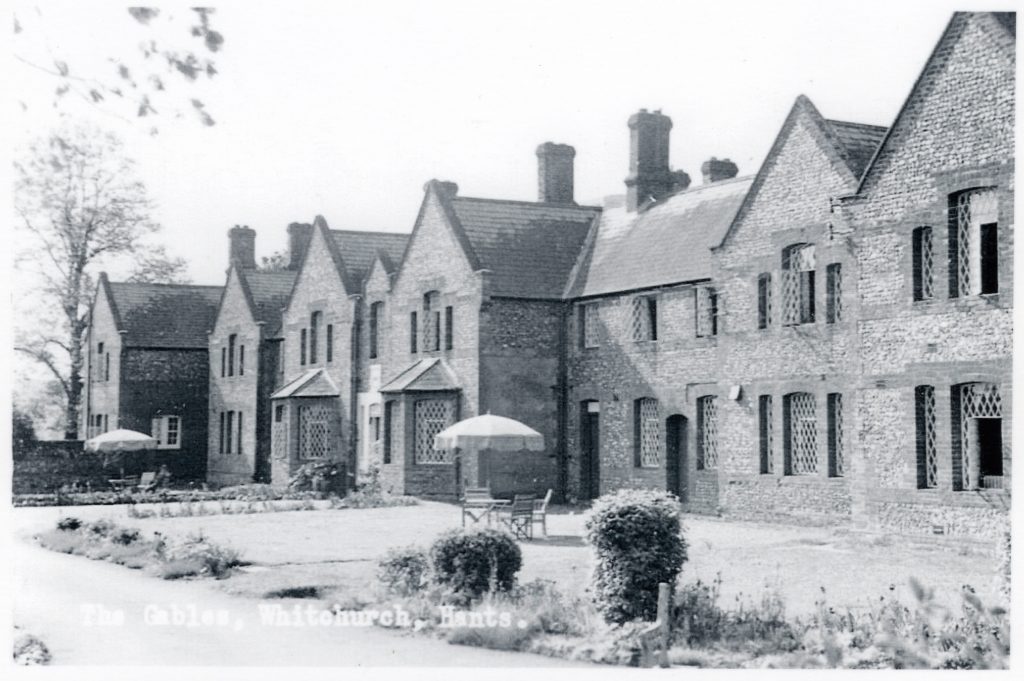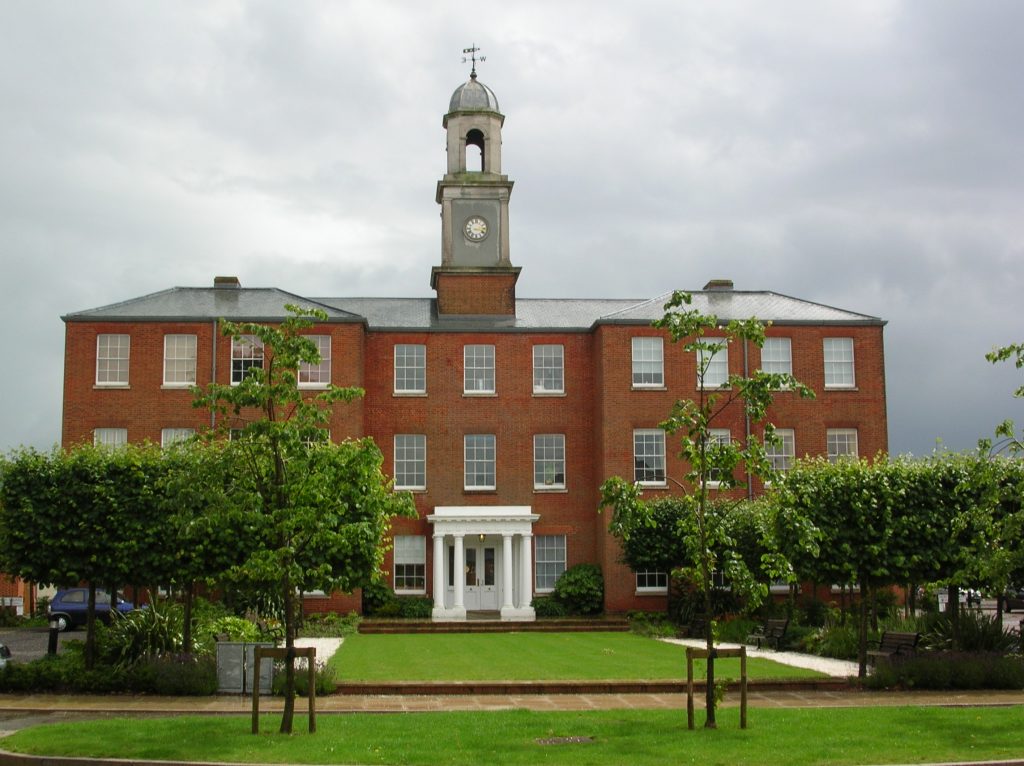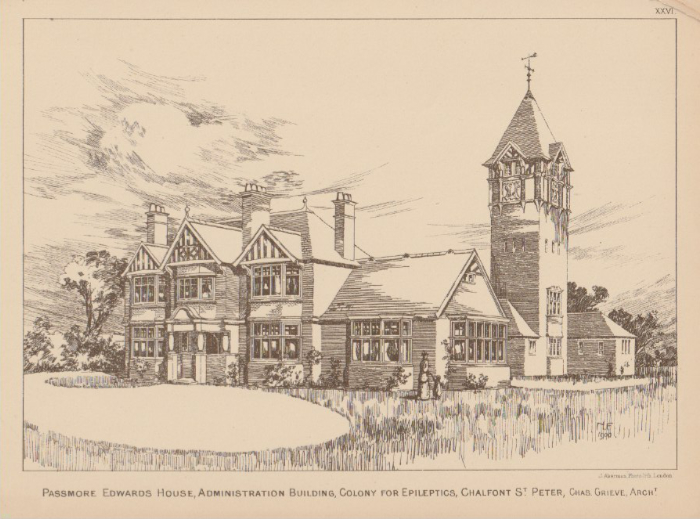Warning this post contains terminology that today would be unacceptable.
Today for most of us our journeys into our ancestors pasts starts with the big subscription genealogy websites such as Ancestry, Findmypast & The Genealogist. There is nothing wrong with that and my first steps with any new research project is using these sites, normally Ancestry first to build a basic tree.
All these sites offer various amounts of data for places around the world and for English & Welsh Genealogy you can find the basic building blocks of Civil Registration Indexes (for Births, Marriages & Deaths), the 1841-1911 Census records & 1939 Register on all of them and the 1921 Census on Ancestry & Findmypast. Great for getting started with your family history and working back through the 20th & 19th Centuries.
However, more basic building blocks are required before Civil Registration started in England & Wales in 1837, for that we need the parish registers. These tell us the baptism, marriage and burial information for our ancestors but not all of them are online! It’s only in the last couple of years that Hampshire Parish Registers have been added to Ancestry, a huge bonus for me plus they go on far past the start of Civil Registration. But before that I had to use indexes available on CD from Hampshire Genealogical Society (HGS) and also looking a them on microfiche at Hampshire Archives & Local Studies (HALS). So it hasn’t always been as easy as it is today to find my Hampshire ancestors.
These sites offer far more than those records for countries worldwide but for this post I just want to concentrate on these records.
Case Study: Rhoda Goodyear and the Whitchurch Poor Law Union in Hampshire, England
This case study is going to be in 2 parts. In part 1, I’m going to use just the information that I could find for Rhoda Goodyear on Ancestry plus copies of her birth and death certificate that I purchased as digital images from the General Register Office (GRO). In part 2, I’m going to add in some information from various documents held at HALS.
Where available these digital images only cost £3 and are worth purchasing if you can as they can add extra details to your family tree. Since they were made available I’ve been gradually buying them for my own tree for all the siblings of my direct ancestors, in doing so I’ve discovered new addresses, new jobs and filling in those gaps between the censuses.
This case study aims to demonstrate that family history research often needs to “Go beyond the online Genealogy sites” if we truly want to understand the lives of those that came before us.
Part 1
Rhoda Goodyear born 3 Dec 18851 at Stoke in the parish of St Mary Bourne, Hampshire the daughter of Alexander Goodyear (a Labourer) & his wife Mary Ann Wooten. She had an older sister Mary Ellen and two younger sisters Emily Victoria and Mildred Louisa.

She is found on 5 Apr 18912 at the time of the census to be living with her family in Faccombe, Hampshire. Using the birth places on this census it appears the family relocated to Faccombe between Rhoda’s birth at Stoke in 1885 and Emily’s birth at Faccombe which was registered in Q1 1888. Mildred’s birth also at Faccombe was registered Q4 1889 meaning that the family moved back to the parish of St Mary Bourne between Mildred’s birth in 1889 and the next census taken on 31 Mar 19013 where we find Rhoda is still living with her family but now back in the parish of St Mary Bourne living on Stoke Road.
Note: No baptism has been found for Rhoda, all her sisters being baptised Primitive Methodist.
Up until this point nothing other than the lack of baptism seems unusual for a labouring family in a rural area in the late 19th – early 20th Century.
However, the next part of the story found online changes things, as Rhoda is admitted to Hampshire County Lunatic Asylum 2 Sep 19084 where she died the following year on 16 Dec 1909. Her death certificate5 gives the cause as “Lobar Pneumonia, 5 days”.

So now by using birth & death records, the census & the Lunacy Patients Admission Registers we know the basics of Rhoda’s short life.
However, this doesn’t tell us why Rhoda was sent to the Hampshire County Lunatic Asylum.
So what’s next? Where should we look? What records might be able to tell us more about Rhoda and fill in gaps between the events we know of?
Part 2
Our first step on this journey would be to check to see what records are available for the Hampshire County Lunatic Asylum by using the HALS database search facility.
Note: This is going to be a statement of facts as they were stated at the time. Purely used as an example of the types of information that can be found.
Tip: when you’re searching places like this make sure you know any later names of the asylum!
Although the records do come up in the search using “Hampshire County Lunatic Asylum” they are listed under “Knowle Hospital, Fareham” with catalogue reference 48M94. Within this you can see the vast amount of data the archives holds on the asylum but for this case we need 48M94/B Patient Administration.
At this time a “Reception Order” would have been made within the Poor Law Union that Rhoda was from which in this case is Whitchurch. As we know the date she was admitted from records on Ancestry it is relatively easy to track that down. These are found in 48M94/B6 Reception Papers and for some in this collection the orders have been catalogued individually but those from 1894 -1922 are in bundles. The bundle for 1908 is 48M94/B/A57 which is where the order for Rhoda Goodyear was found.
This document was created on 1 Sep 1908 and was authorised by a Mr. John Thomas Bingham, Justice of the Peace. At this point in time the document does tell us that Rhoda was an inmate at the Whitchurch Workhouse.

The particulars of Rhoda’s case was given next by E. H. Lansley the Relieving Officer6 for the Whitchurch Union. It was his job to evaluate Rhoda’s case for the Whitchurch Union. However, apart from her age, religion and father’s name what he knows is of little use in this case.
What is most helpful is the report from the Medical Officer for Whitchurch Union, Frederick Arthur Coates.
Facts indicating insanity observed by myself at the time of examination – Says someone is following her about that she cannot see but can hear, also that she feels she is sometimes falling into a well or a pond. Said “my right mind is gone”, says “I have fits every night when I am asleep but I cannot remember anything about them in the morning”. She afterward stated that she does not have fits for months.
From this paragraph in the report we do learn that she is having fits. But there is no specific cause mentioned.
Fact communicated by others – Charles Edmunds, Master, The Workhouse Whitchurch, Hants states:- that she is disagreeable amongst the other inmates, makes unfounded complaints against various officials, she threatens to escape, uses obscene language, she has been known to be in the highway with only her nightdress on.
Clearly from the master’s statement Rhoda was not happy at the Workhouse and the master was not happy with her, but again we still don’t have the answer as to what was the real cause of Rhoda’s admission to the Workhouse. Surely there is more to the case than fits and a disagreeable nature!
We can use other documents in the collection such as Admission Registers and Discharge Registers but if they survive it is the case books that can be the most interesting.
It is in the case book (48M94/B19/1) that we find:
Epileptic: Yes
Finally in amongst the start along with much repeated is this one item that tells us why Rhoda suffered from fits!
However, under supposed cause we get this
Predisposing: Congenital mental deficiency not amounting to imbecility
So they’re not saying she’s an imbecile but they are saying that her condition is from birth and is classed as a mental deficiency at the time.
The next important part is in the Previous History section
Mr Lansley, R.O.: She has had epileptic fits for at least 10 year. She was in the Chalfont Epileptic Colony for 10 days last December but would not stay there owing she said to hard work. Before and after then she lived with her parents until a fortnight ago when she went to the Workhouse.
This is interesting as Mr Lansley doesn’t mention this in his particulars of the case on the Reception Order. More questions! What was Chalfont Epileptic Colony? Why was she only there 10 days?

Moving on to the History of the Case section
- 5 Sep 1908 – A very typical epileptic who is assertive, full of fancied grievances, hypochondriacal, morbidly sensitive, emotional, quarrelsome and very argumentative. J.W.R.
- 2 Oct 1908 – A petulant querulous morbidly irritable woman whose conversation consists largely of semi tearful childish complaints that have no foundation beyond her own epileptic imagination. Thin but in moderate health, eats well. J.W.R.
- 19 Oct 1908 – She is extremely hypochondriacal, irrational, peevish and full of groundless complaints. Last month she had 22 fits, but for so far in this month with increased bromide she has had only 3. W.J. MacKeown.
- 28 Oct 1909 – She continues extremely peevish, quarrelsome & full of scheming. W. J. MacKeown.
Above are just 4 of the entries out of 14 in Rhoda’s case book, not exactly pleasant reading but what was written at the time. But in amongst them is yet another important part “increased bromide” which was the treatment the asylum was giving Rhoda for her Epilepsy and from the number of fits mentioned the previous month the increase in medication had clearly helped reduce the amount of fits she suffered.
The case book goes on to give more information about her death and we do find out that she didn’t die alone and that Ethel Judd, Under Nurse was with her.
The final record I did find for Rhoda was of her Post Mortem (48M94/B29/8), this states her form of mental disorder is “Epileptic Insanity”.
Depending on survival of records, all of some of the document types mentioned may be found not only in HALS but other archives too. But before looking you should be prepared to read information that you may not like.
So these records have told us that Rhoda was Epileptic something that would have not been known otherwise as there was no mention of Epilepsy on her death certificate. It has also given us a new place to look for records and that is the Chalfont Epilepsy Colony.

I was unable to track down any records for the colony (which still exists and is now part of the Epilepsy Society9) but I did find that there were records at HALS in the form of minute books (Q34/1).
The Chalfont Epileptic Colony Committee which met at The Castle in Winchester, were responsible for individuals gaining admittance to the colony.
30 Dec 1907 – The Chairman reported that he had dealt with and forwarded to the Chalfont Authorities the following case that had been approved by W. Bostock the only member of the Committee who attended the meeting called on the 6th October 1907 namely:
Rhoda Goodyear, aged 22 residing at Gangbridge, St Mary Bourne. The Guardians of the Whitchurch Union agreeing to be responsible for the cost of maintenance.
From this we can see that the Poor Law Guardians for Whitchurch Union had been involved in her case.
6 Apr 1908 – The Clerk of the Peace reported that Rhoda Goodyear who was admitted to Chalfont on the 14th December last left the Colony on the 31st December.
Read letter dated 21st January 1908 from the Clerk of the Guardians of the Whitchurch Union stating that from a further statement made by R. Goodyear the Guardians do not feel satisfied that she was given a fair chance at the Colony. That she states that during her stay at Chalfont she never saw a Doctor and that the statement in Mr Penn Gaskell’s letter of the 1st January 1908 to the Guardians that her people had removed her on their own initiative is entirely denied by them. The Clerk of the Peace reported that at the direction of the Chairman he had communicated with Mr Penn Gaskell and read his reply dated 30 January 1908 from which is appeared that the allegations were entirely unfounded.
The Clerk reported that a copy of Mr Penn Gaskell’s letter had been furnished to the Guardians.
These two statements are the only mentions of Rhoda in this minute book. But it is clear from these and the mentions of Whitchurch Workhouse in the Asylum Casebooks checking what records are available for Whitchurch Workhouse are essential for this case.
PL3/18 is the reference for the Whitchurch Union Board of Guardian records which has minute books from 1835-1913. However, looking at PL5/13 which is where any admission/discharge registers would be sadly is of no help as none appear to have survived.
The minute books however give much insight into Rhoda’s life starting in 1904.
From PL3/18/12
12 Dec 1904 – The clerk was directed to write and ask Dr. W.A.S. Royds to report to the next meeting of the Board on the state of Rhoda Goodyear and whether in his opinion the case was one which could be suitably treated in the Hampshire House at the Chalfont Epileptic Colony.
26 Dec 1904 – With reference to the case of Rhoda Goodyear, Dr. W.A.S. Royds reported that he thought the case (if the parents were willing) would be a very suitable one for treatment and training at the Chalfont Epileptic Colony.
It was resolved that application be made for her to be admitted to the colony.
5 Feb 1906 – The Relieving Officer was instructed to ascertain whether the parents of Rhoda Goodyear would allow her to be sent to the Chalfont Epileptic Colony.
19 Feb 1906 -The Relieving Officer also reported that the parents of Rhoda Goodyear were still unwilling for her to go to the Chalfont Epileptic Colony.
Here we can see that the authorities (in this case the Whitchurch Poor Law Union) had been trying for over a year to help Rhoda but her parents didn’t want her to go to Chalfont Epileptic Colony.
From PL3/18/13
19 Aug 1907 – An application from Rhoda Goodyear to be sent to the Chalfont Epileptic Colony having been considered. It was resolved that application be made for her to be admitted to the Colony and that the Clerk be directed to take the necessary steps on behalf of the board.
2 Sep 1907 – The Clerk read a letter from the Clerk of the County Council acknowledging receipt of application for admission of Rhoda Goodyear to the Chalfont Epileptic Colony and stating that the same should be laid before the local committee at their next meeting.
14 Oct 1907 – The Clerk also read a letter from Mr. H. Barber stating that Rhoda Goodyear had been nominated for admission to the Hampshire House at the Chalfont Epileptic Colony on the understanding that the Guardians would be responsible for the cost of maintenance. The application would be submitted to the Committee of the Colony with whom the question of whether the case was suitable rested, and he would let them know when he had heard the result of the application.
25 Nov 1907 – The Clerk read a letter from the Clerk of the Peace stating that Rhoda Goodyear had been duly accepted for admission to Chalfont when a vacancy occured.
Resolved the Relieving Officer be directed to conduct Rhoda Goodyear to the Colony on receipt of notice that she could be received there.
9 Dec 1907 – The Clerk laid before the Board a letter from the Secretary to the National Society for employment of Epileptics stating that there was a vacancy available for Rhoda Goodyear at Chalfont Epileptic Colony, giving particulars of the route to the Colony and as to the arrangements to be made with the Matron as to her reception, also forwarding a list of clothing to be taken by the patient and a form of engagement for maintenance.
The Relieving Officer reported that he had handed the list of clothing to the patient’s mother who would see that the same was provided and also that he would make arrangements to remove the patient on the 14th inst.
Resolved that the Clerk be authorised and directed to sign the form of engagement for maintenance on behalf of the Board.
23 Dec 1907 – The Clerk reported that the mother of Rhoda Goodyear had offered to contribute the sum of 2s/6d per week towards the latter’s maintenance at Chalfont.
Resolved that the offer be accepted.
6 Jan 1908 – The Clerk also read a letter from G. Penn-Gaskell relative to Rhoda Goodyear stating that her people had removed her on their own initiative from Chalfont Epileptic Colony and the Matron thought it was as well that they had done so as there was no probability of her settling down happily or becoming a suitable Colonist.
The Relieving Officer having made a statement as to her treatment at the Colony it was resolved that the Clerk be directed to obtain a written statement from Rhoda Goodyear on the matter and that further consideration of the subject be adjourned till next meeting.
20 Jan 1908 – The Clerk laid before the Board a written statement (signed by Rhoda Goodyear) as to her treatment at the Chalfont Epileptic Colony.
Resolved that the Clerk be directed to forward a copy of such statement together with a copy of the letter from the secretary to the National Society for Epileptics notifying the Guardians of the removal of Rhoda Goodyear from the Colony, to the Hampshire Committee for Epileptics and state that the Guardians did not feel satisfied that Rhoda Goodyear was given a fair chance at the Colony, also call the Committee’s attention to the fact that she never saw a Doctor whilst she was at the Colony and also point out that her people denied that they removed her from the Colony on their own initiative.
14 Sep 1908 – The Collector was directed to see the parents of Rhoda Goodyear and suggest that possibly they might like to contribute towards the cost of her support at the Asylum.
28 Sep 1908 – The Collector reported that the parents of Rhoda Goodyear had offered to contribute the sum of 1s 6d per week towards the cost of her maintenance in the County Asylum.
Resolved that the offer be accepted.
20 Dec 1909 – The Clerk laid before the Board Notice of death in the Hants County Lunatic Asylum on the 16th instant of Rhoda Goodyear.
Various letters are mentioned in the minutes but these do not seem to have survived, but to be able to at least get both sides of the minutes when it came to the interaction between the Board of Guardians and the Chalfont Epileptic Colony Committee was helpful.
Rhoda’s life after the census in 1901 is documented in minute books and asylum records. Documents that are unlikely to ever end up on the online Genealogy websites. This is just one example of what can be found if you’re prepared to look. It isn’t possible for everyone to go to the archives in person because at least geographically that isn’t always practical. But help is available from genealogists like myself around the country to do the research for you or even just get you copies of the documents if you track down what you want first via the online catalogues for individual archives.
Rhoda’s story and transcripts of her reception order and case book are available to view on my St Mary Bourne One-Place Study website. It is a story that a descendant of one of her sisters knew nothing about, her name had been forgotten in the family. I too am related to Rhoda she is my 2nd cousin 3x removed and I originally discovered her story by accident, a snippet into her life whilst researching another case in the Whitchurch Union Minute books.
- Birth Stoke, Hampshire, England 3 Dec 1885 Rhoda Goodyear, (Q1 1886, Whitchurch, Vol. 02C, Pg. 217). Cit. Date: 23 July 2025. General Register Office, Stockport. ↩︎
- Census 1891 Faccombe, Hampshire, England (household of Alexander Goodyear), (RG12 piece 965, folio 6, page 5). Cit. Date: 23 July 2025. The National Archives, London. ↩︎
- Census 1901 Stoke Road, St Mary Bourne, Hampshire, England (household of Alexander Goodyear), (RG13 piece 1112, folio 19, page 11). Cit. Date: 23 July 2025. The National Archives, London. ↩︎
- Ancestry.co.uk: UK, Lunacy Patients Admission Registers, 1846-1921, database with images, Commissioners in Lunacy, 1845–1921. Lunacy Patients Admission Registers, Series MH 94, https://www.ancestry.co.uk/search/collections/9051/, Rhoda Goodyear, Admitted: 2 Sep 1908, Discharged or Died: 16 Dec 1909, Institution: Harts; accessed: 14 August 2025. The National Archives. ↩︎
- Death Hampshire County Lunatic Asylum, Knowle, Hampshire, England 16 Dec 1909 Rhoda O Goodyear, (Q4 1909, Fareham, Vol. 2B, Pg. 365). Cit. Date: 28 July 2025. General Register Office, Stockport. ↩︎
- https://www.workhouses.org.uk/admin/ ↩︎
- https://en.wikipedia.org/wiki/Knowle_Hospital#/media/File:HantsCountyAsylum.jpg ↩︎
- https://thepassmoreedwardslegacy.org.uk/the-national-society-for-epilepsy-chalfont-st-peter ↩︎
- https://epilepsysociety.org.uk/what-we-do/our-chalfont-centre14 Sep 1908 ↩︎
